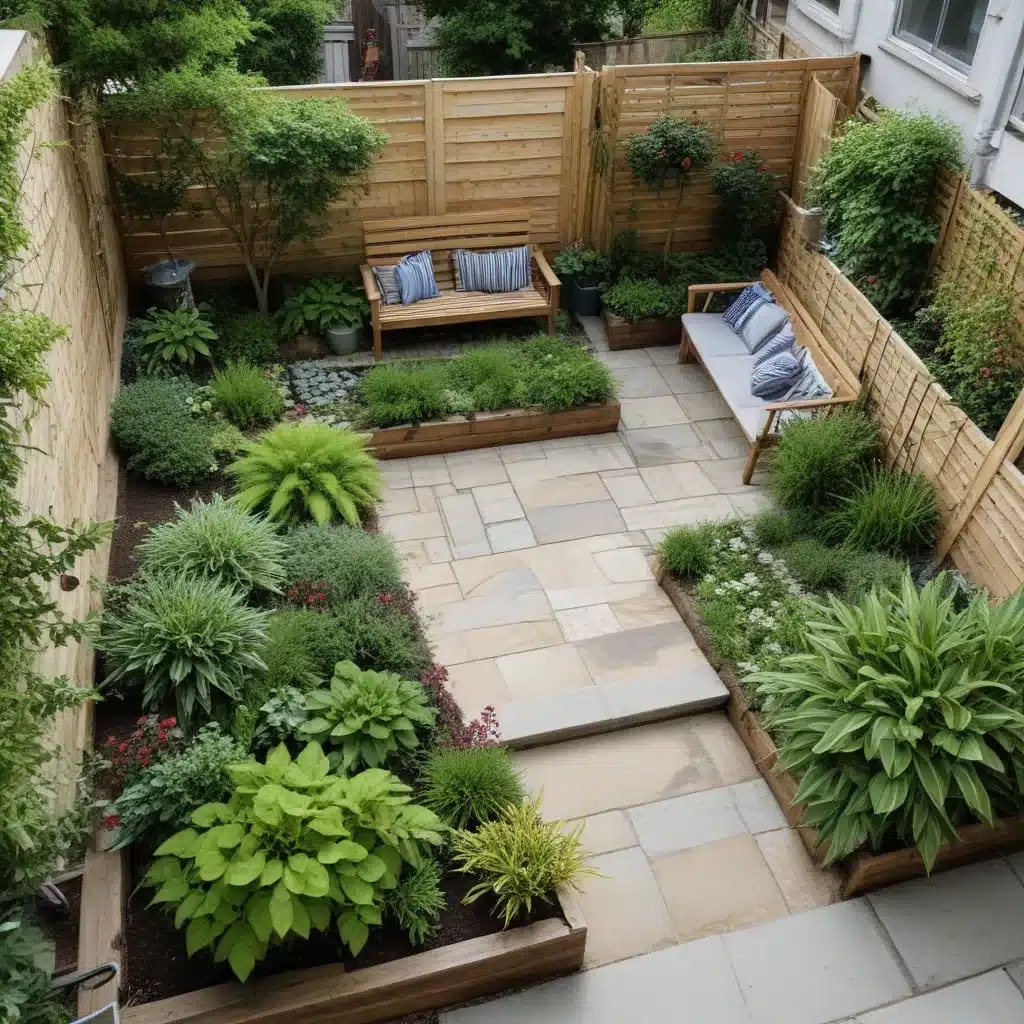
Unlocking the Potential of Limited Outdoor Spaces
As a seasoned construction professional and interior designer, I’ve seen firsthand the challenges and opportunities that come with transforming small urban yards into vibrant, functional outdoor oases. While compact spaces may seem limiting, with the right approach, you can create a beautifully designed landscape that maximizes every square foot.
Designing for Efficiency and Functionality
The key to success in a small urban yard lies in strategic planning and a keen eye for detail. Begin by carefully evaluating your available space, considering factors such as sun exposure, wind patterns, and existing features like trees or structures. This will help you determine the best layout and use of the area.
One effective technique is to employ a grid-like planting system, spacing plants closely together to optimize every inch. This “small-plot intensive” approach, inspired by the SPIN farming model, allows you to pack a surprising number of flowers, herbs, and vegetables into a tight footprint. By selecting fast-growing, prolific varieties, you can ensure a continuous harvest throughout the season.
“It’s not about the amount of space you have, but how you use it.”
Incorporating Vertical Elements
When space is limited, thinking vertically can be a game-changer. Incorporate trellises, arbors, or espalier-trained plants to make the most of your available square footage. Vining crops, such as sweet peas or trailing vines, can climb upwards, freeing up valuable ground space for other plantings.
Additionally, strategically placed raised beds or planter boxes can provide additional growing areas without encroaching on walkways or seating zones. These elevated structures also help to define distinct garden “rooms” within your compact yard.
Embracing Multifunctional Hardscaping
While lush greenery is essential, thoughtful hardscaping can also play a crucial role in maximizing your small space. Consider using permeable paving materials like interlocking pavers or decomposed granite, which allow water to permeate and reduce the need for extensive drainage systems.
Incorporate dual-purpose elements, such as a patio that doubles as a driveway or a bench that incorporates storage. Clever design solutions like these can help you make the most of every inch while maintaining a cohesive, visually appealing aesthetic.
Leveraging Vertical Surfaces
Don’t forget to utilize the vertical surfaces within your compact yard. Tall fences, walls, or even the sides of your home can become canvases for living art in the form of green walls or vertical gardens. These modular planting systems allow you to cultivate a lush, verdant display without taking up precious ground space.
Optimizing Lighting and Ambiance
Effective lighting can transform a small yard into a cozy, inviting oasis, even after the sun goes down. Strategically placed path lighting, accent fixtures, and overhead illumination can create the illusion of depth and expand the perceived size of your outdoor area.
Consider incorporating solar-powered lanterns, string lights, or up-lighting to highlight key architectural or botanical elements. These lighting choices not only enhance the aesthetics but also extend the usability of your small space well into the evening hours.
Cohesive Design and Seamless Integration
When designing a small urban yard, it’s essential to maintain a cohesive, visually harmonious aesthetic. Carefully select materials, colors, and textures that complement the architecture of your home and create a sense of flow throughout the space.
Seamlessly integrate the outdoor area with the interior of your home by extending the same design principles and materials to the interior and exterior. Large windows, sliding doors, or French doors can help blur the lines between indoor and outdoor living, making the most of your limited square footage.
Embracing Sustainability
As a construction professional and interior designer, I’m a strong advocate for incorporating sustainable practices into all aspects of my work, including landscape design. By thoughtfully selecting drought-tolerant, native plants and implementing water-efficient irrigation systems, you can create a low-maintenance, eco-friendly oasis that thrives with minimal resources.
Moreover, consider incorporating permeable surfaces, rain gardens, or bioswales to manage stormwater runoff and enhance the overall sustainability of your small urban yard.
Personalize and Enjoy
Ultimately, the design of your small urban yard should reflect your personal style and lifestyle. Incorporate elements that bring you joy, whether it’s a cozy seating area, a productive vegetable garden, or a whimsical water feature. By personalizing your outdoor space, you’ll create a sanctuary that you’ll be eager to spend time in, no matter the size.
Remember, with thoughtful planning, creative design solutions, and a focus on efficiency, even the most compact urban yards can be transformed into vibrant, functional outdoor retreats. Embrace the challenge and let your imagination soar as you create a truly remarkable small-space oasis.
For more information on sustainable landscape design, visit the Local Builder London website. Our team of experienced professionals is here to help you unlock the full potential of your outdoor living spaces, no matter the size.
Maximizing Small Spaces: Key Strategies
- Employ a Grid-Like Planting System: Utilize a “small-plot intensive” approach, inspired by SPIN farming, to pack in a surprising number of plants.
- Incorporate Vertical Elements: Use trellises, arbors, or espalier-trained plants to make the most of your available square footage.
- Embrace Multifunctional Hardscaping: Strategically place raised beds, planter boxes, and dual-purpose elements like patio-driveways.
- Leverage Vertical Surfaces: Create living walls or vertical gardens to cultivate lush greenery without taking up ground space.
- Optimize Lighting and Ambiance: Incorporate strategic lighting solutions to enhance the aesthetics and extend the usability of your small space.
- Maintain Cohesive Design: Ensure a visually harmonious aesthetic by selecting materials, colors, and textures that complement your home’s architecture.
- Embrace Sustainability: Incorporate drought-tolerant plants, water-efficient irrigation, and permeable surfaces to create an eco-friendly outdoor oasis.
- Personalize and Enjoy: Tailor the design to reflect your personal style and lifestyle, creating a sanctuary that you’ll love spending time in.
By implementing these strategies, you can transform even the most compact urban yards into vibrant, functional outdoor retreats that maximize every square foot of your available space.


